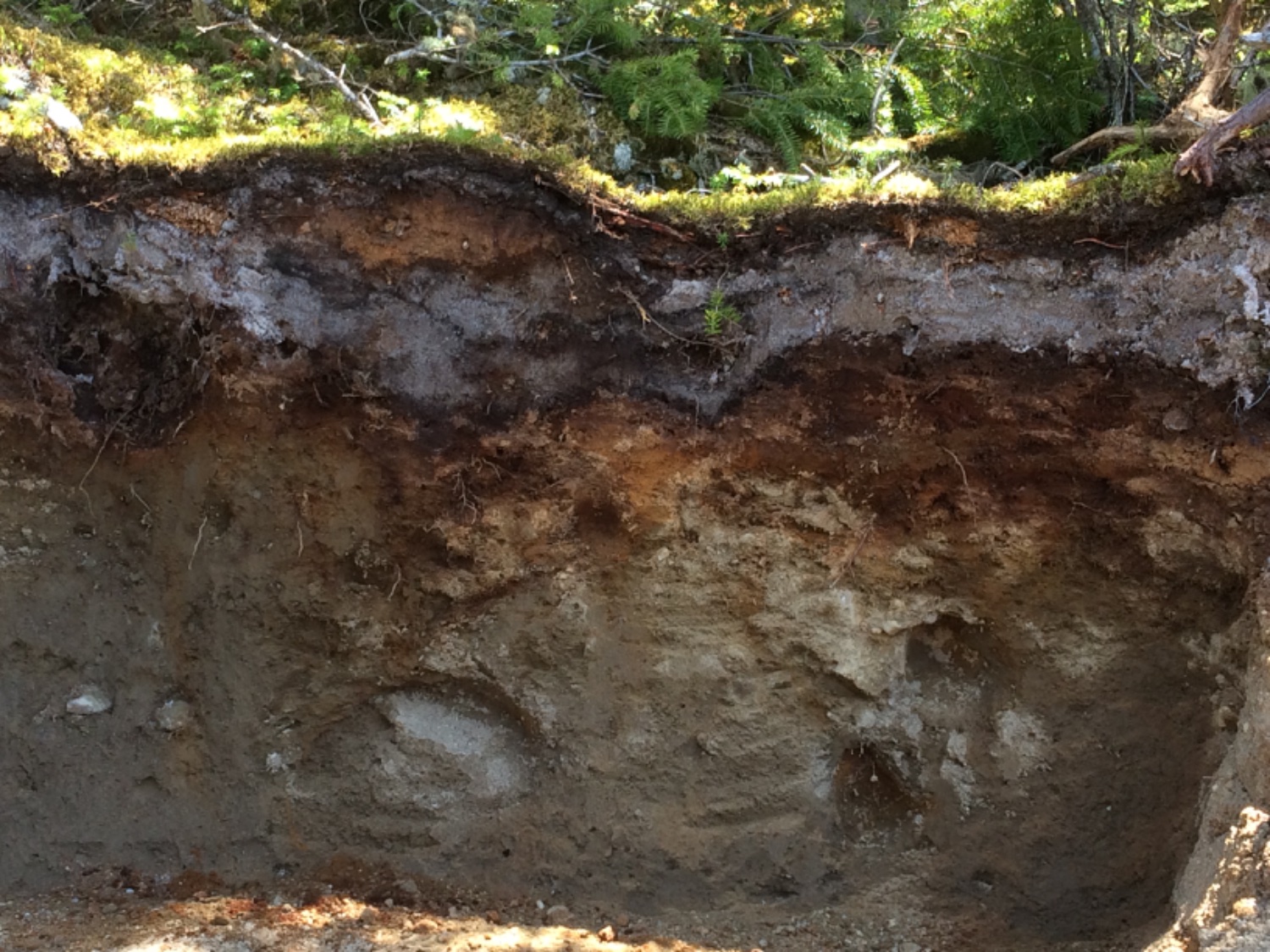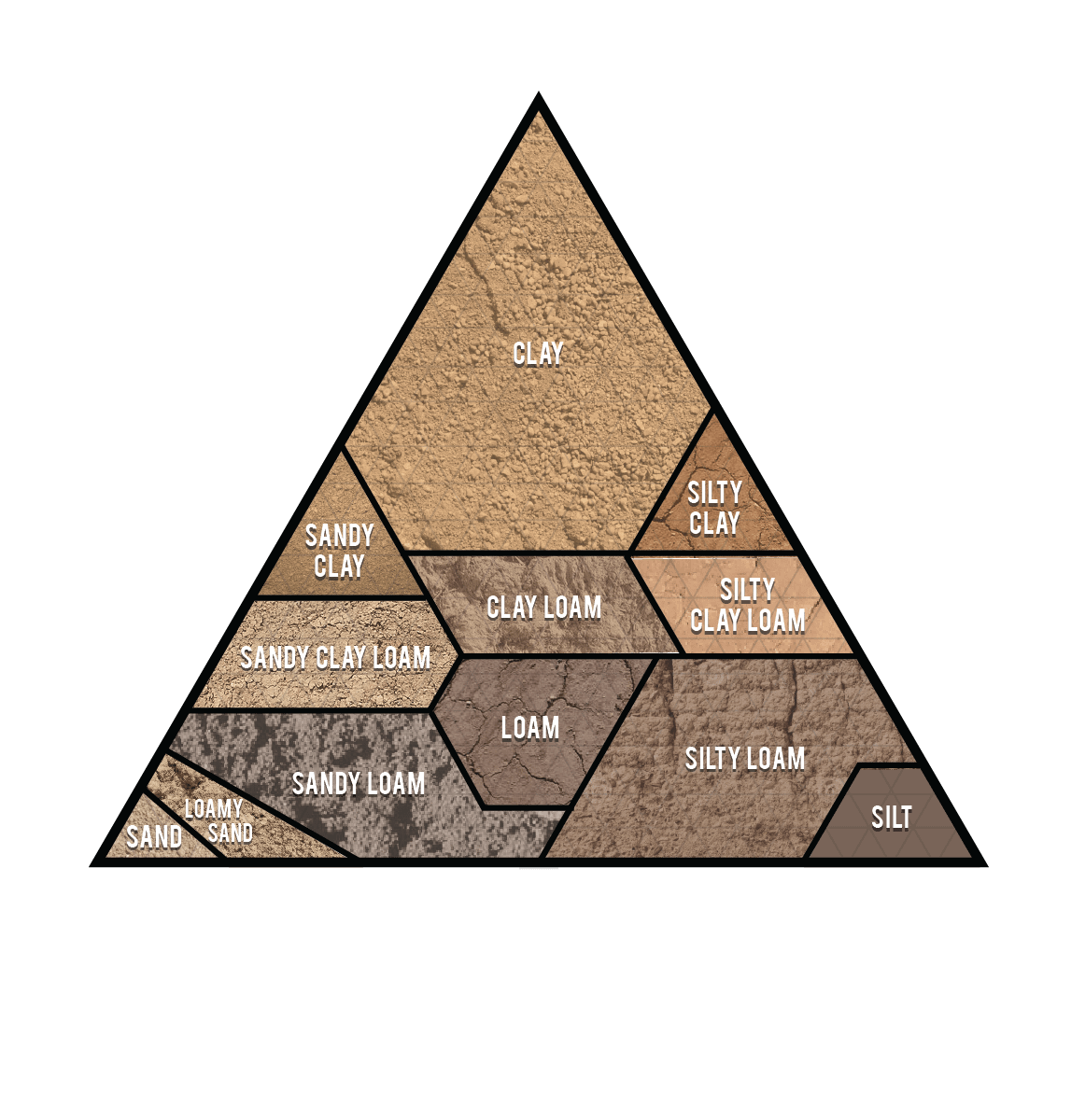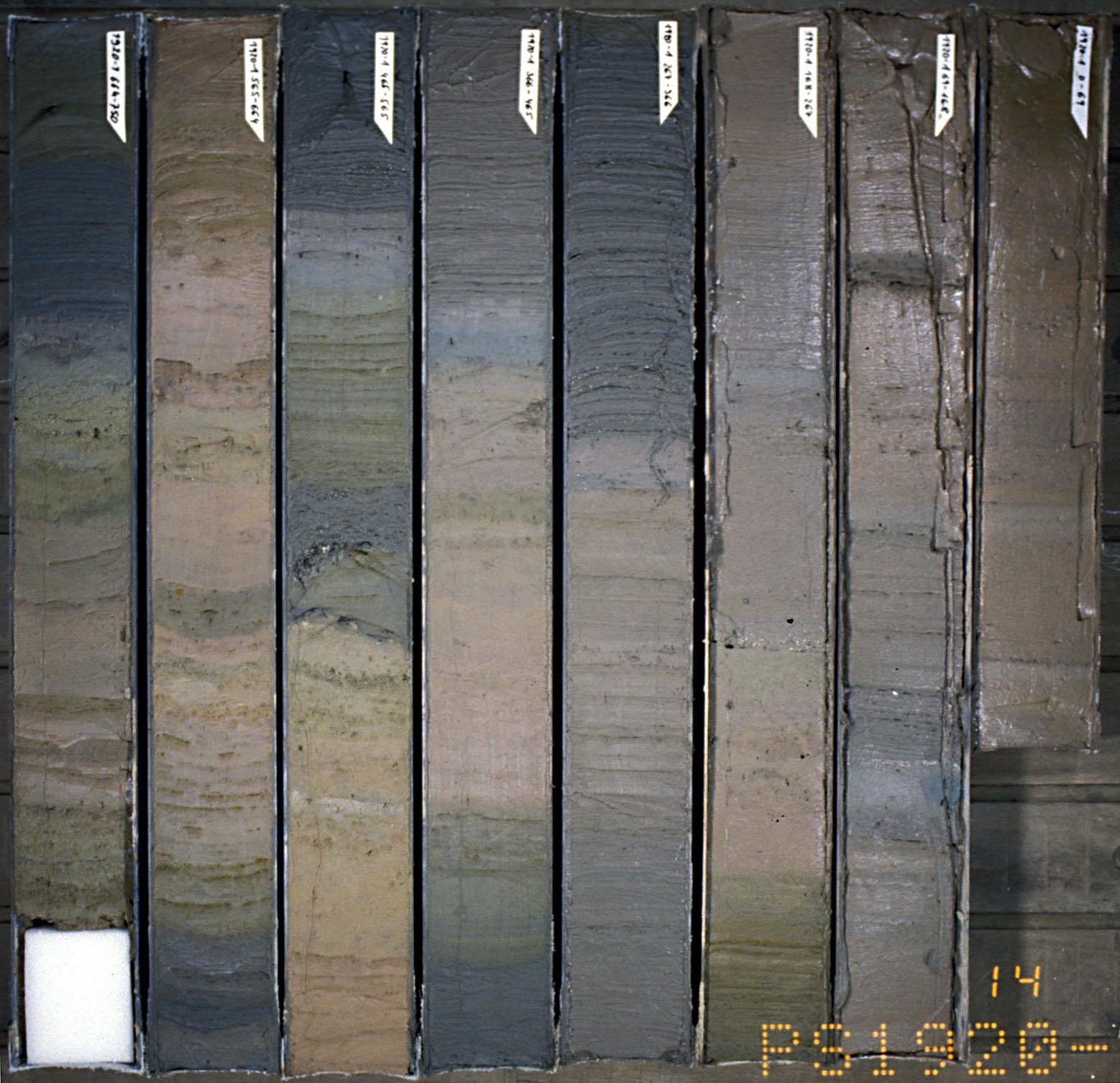This is a really nice one. While I kind of wish the photo quality was better, I kind of like the way it is since it gives it a kind of painted impressionist look to it.
if you look closely, under the Ae (the white horizon) you can see a thin Bh horizon, where organic acids have leached from the Ae and been deposited. Below that is the Bf horizon, where iron from the Ae deposited.
this podzol looks like it's developed on till, given the look of the C horizon (clay loamish looking) and the shape of the rocks on the left hand side.
Great share! post more!


